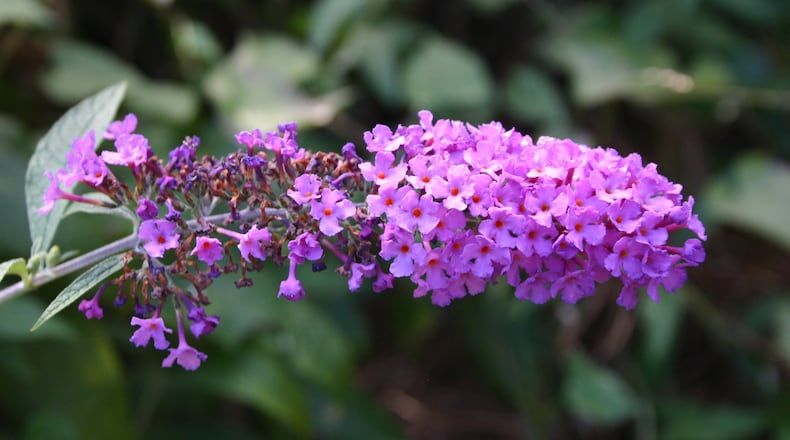Q: We have some lovely butterfly bushes that are getting too big for their space. When is the best month to prune them back?Letty Konenkamp, Greene County
A: Butterfly bush responds very well to yearly pruning in the winter. Blooms on this shrub are made at the tips of new growth. Severe pruning, which forces lots of new growth to emerge, results in more flowers to enjoy. How far down to make your pruning cuts depends on the mature size of your shrub. I used to prune my mother's 8-foot-tall butterfly bush down to 18 inches every January. You could reduce a 4-foot-tall shrub to 12 inches without a problem.
Q: I have elephant ears that flower every year for me. I love their sweet smell. Can I bring them inside? I was told by a friend that they smell horrible once cut.Debbie Henfry, Australia
A: You possibly have fragrant elephant ear, Alocasia odora. Like all aroids, including peace lily, anthurium, Jack-in-the-pulpit, caladium, etc, an elephant ear "flower" (spathe and spadix) exudes a fragrance to attract flies, beetles, and other pollinators. Some aroids smell like dead meat, some like rotten butter. I have never grown fragrant elephant ear, so I do not know if the scent changes as the spathe and spadix mature. It would be simple to cut one, take it indoors, and let your nose determine what to do.
Q: Do you know of anything to get rid of wild onions except pulling them out?Micki Clifff, email
A: Hand-pulling wild onion or wild garlic has the disadvantage of leaving in the soil the bulbs that don't currently have leaves. The herbicide imazaquin (Image for nutsedge) is absorbed by the roots of wild onion or wild garlic and therefore gives more complete control. A suggested application technique is to spot spray the herbicide on and around a clump of weeds, then drench the area with one pint to one gallon of water. The chemical will be carried down to the roots for quick absorption.
Q: Deer have left my azaleas alone for 30 years but this year a young buck has completely defoliated my plants. What should I do with them now?Jill Kalina, email
A: Deer have incisor teeth in their lower jaw but not in the upper jaw. So when they nibble on a bush, they have to jerk upward once or twice to clip the limb. This usually leaves a ragged end. Your best option is to use hand clippers to make clean cuts on the tips of as many branches as you have the time to care for. This will help prevent stem diseases from invading. Deer control can be an exercise in frustration. Repellents work sometimes. But nothing is 100% effective for deer control except a fence.
About the Author
The Latest
Featured
